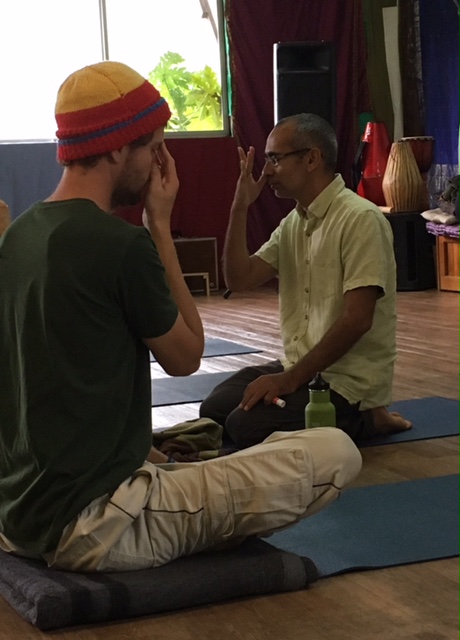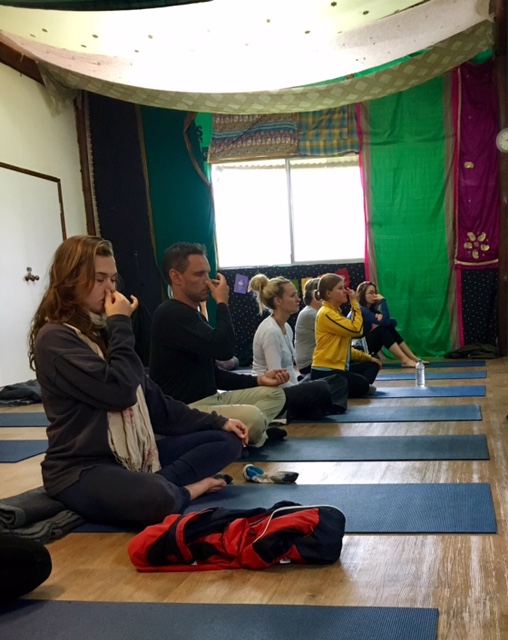During a recent workshop at Krishna Village, we delved deeper into the practice of Pranayama. The word prana means ‘life force’ in Sanskrit, and yama means restraint or ayama which means control. So, through the control and restraint of breath (life force) we are able to improve our physical and mental health as well as our relationship with self by connecting with our own breath. Sounds strange, I know – but it’s actually really true that you learn more about yourself when you understand your own breath.
Are you battling insomnia?
During the workshop, our facilitator Bharat mentioned that Pranayama is a practice which – for example – benefits people who suffer from insomnia and can be used to aid sleep. I found this very interesting, so I did some more research and was astounded by what I learned:
I was surprised to find that insomnia affects quite a large part of society. Here are some interesting statistics taken from recent studies:
- People sleep 20% less than they did 100 years ago.
- More than 30% of the population suffers from insomnia.
- One in three people suffer from some form of insomnia during their lifetime.
- Between 40% and 60% of people over the age of 60 suffer from insomnia.

How Pranayama can facilitate better sleep
So what is the answer? There are many therapies that can help treat insomnia, many of them involving prescription medication. However, there are some simple Pranayama breathing that can make a big difference. These techniques are beneficial to stay calm and relaxed throughout the day, helping to circulate oxygenated blood through the body. This calms our para-sympathetic nervous system and allows us to sleep well during the night. Pranayama can also be used before bedtime as part of a nightly routine to prepare the body for rest.
Before doing my yoga teacher training and being part of the workshops here at Krishna Village, I had a basic understanding of Pranayama, but that was nothing compared to now. Having immersed myself in a steady practice for 6 weeks, I can feel the difference in terms of stress relief, anxiety and improved sleeping patterns.
Connecting to your Prana
Prana is life force, vitality, and power – the foundation and essence of all life. It is the connecting link between the material world, consciousness and mind. We gain prana from the world around us in different ways including:
- The air we breathe;
- The food we eat (healthy, fresh, wholesome food contains higher levels of prana compared to junk food, fast food or food with long expiry dates);
- Our environment (on both a physical and metaphysical level) and;
- The spiritual connection we have with our higher and deeper self.
The practice of Pranayama is an extension of life force, by using our breath.

Helpful Pranayama techniques
Nadi Shodana
Nadi Shodana means ‘psychic passage’ or ‘purification’ and is a practice whereby the pranic pathways are decongested. This is an excellent preparation for meditation.
Instructions:
Place your second and third finger in between your eyebrows and use your thumb to block one nostril at a time. Alternately breathe through one nostril while blocking the other:
INHALE with LEFT nostril, EXHALE with RIGHT nostril, INHALE with RIGHT nostril, EXHALE with LEFT nostril (5 rounds).
Benefits:
- Nadi Shodana induces calmness of the mind, by regulating the flow of prana.
- It removes the congestion or blockage of the nadis and thereby allows the free flow of prana.
- The carbon dioxide is more efficiently eliminated.
- It removes the stagnant air from the lungs.
Precautions:
If you feel any discomfort, reduce the duration of inhalation and exhalation. It should be done as though you have all the time in the world.
Ujjayi
This unique form of pranayama produces a hissing or whispering sound in the region of the throat. We call it the “Ocean breath”.
Instructions:
Partially close the glottis in the throat. This is done by slightly contracting the throat. Do not contract your facial muscles (common mistake).
Benefits:
- Improves vocal chords and strengthens the muscles in the throat.
- Releases the physical body and calms the mind.
- Excellent preparation for meditation.
- Helps slowing down the breathing and stimulates thyroids glands.
Tune in
You don’t have to do all of those techniques at the same time, one each evening before bedtime or after some meditation in the morning is more than enough. Practicing for 10 minutes per day is sufficient. However, if you are feeling the benefits, you can utilise pranayama techniques to bring calmness in times of anxiety and stress throughout the day. Keep in mind: taking time to notice your breath will not only relax you, but allow you to feel more in tune with your inner self.
